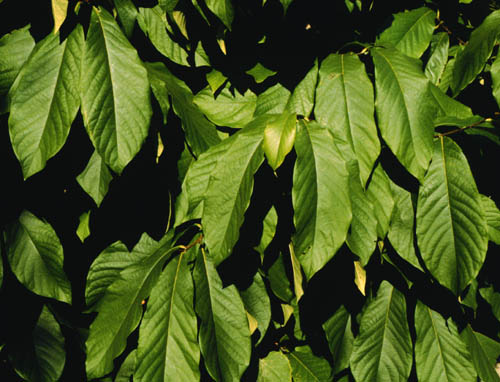Asimina triloba
Common Pawpaw, Custard Apple
Annonaceae
ExpandHabitat
- native to new York down through Florida across through Nebraska
- hardy to zone 5
Habit and Form
- a deciduous small tree or large shrub
- multi-stemmed
- spreading branches form a rounded crown
- 15' to 20' tall and equally as wide
- suckers
- medium growth rate
- medium texture
Summer Foliage
- alternate leaf arrangement
- simple, deciduous leaves
- 6" to 12" long, 3" to 6" wide
- entire leaf margins
- pubescent underside
- dark green leaf color
Autumn Foliage
- yellow fall color
Flowers
- purple flowers
- 1" to 2" in diameter
- blooms in early May
- somewhat showy
Fruit
- greenish-yellow berry, turning black
- edible
- 2" to 5" long
- taste like bananas
- edible
Bark
- dark brown
- rough and scaly
- fecal odor
Culture
- transplant from containers
- prefers moist, fertile slightly acidic soils
- full sun
- prune tolerant
Landscape Uses
- naturalized areas
- for fruit
- street tree
Liabilities
- no serious pest problems
- fruit can be a litter problem
- hard to transplant
ID Features
- naked terminal buds, 0.33" to 0.5' long
- buds are pubescent
- naked superposed flower buds
- alternate leaf arrangement
- large fruit that taste like bananas
- fecal odor to broken branch
- suckers
Propagation
- by seed
- by bud graft
Cultivars/Varieties
Many cultivars have been selected for improved fruit traits. Most are not readily available, but two varieties offered occasionally by specialty New England nurseries are 'Sunflower' and 'Overleese'. These cultivars are notable for large, heavy fruits.
